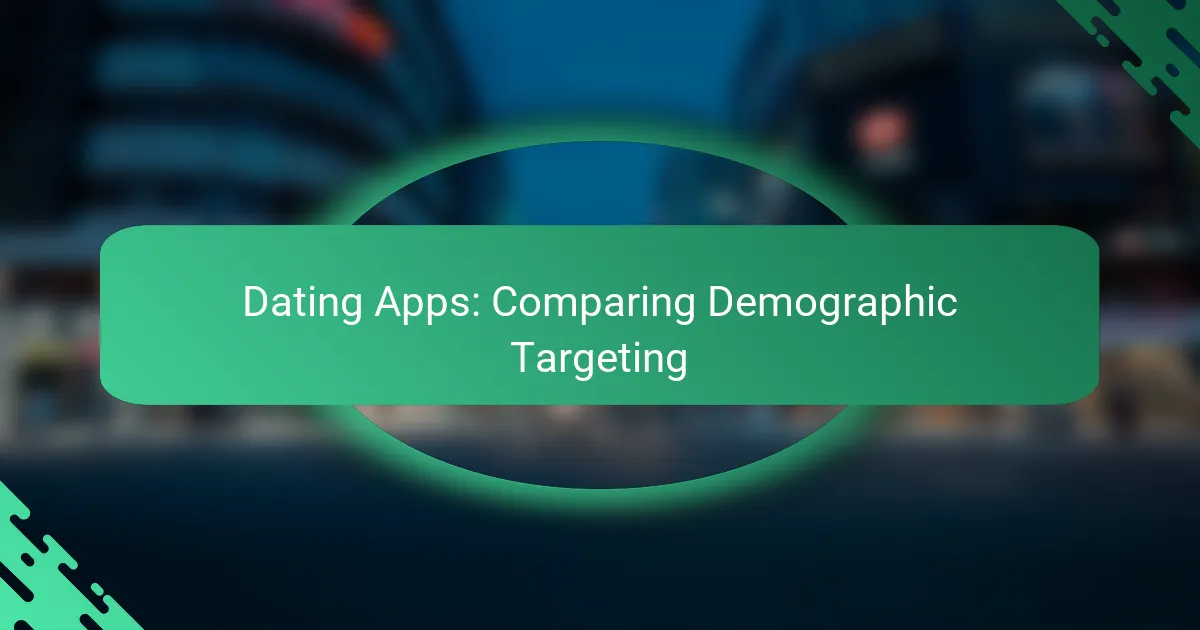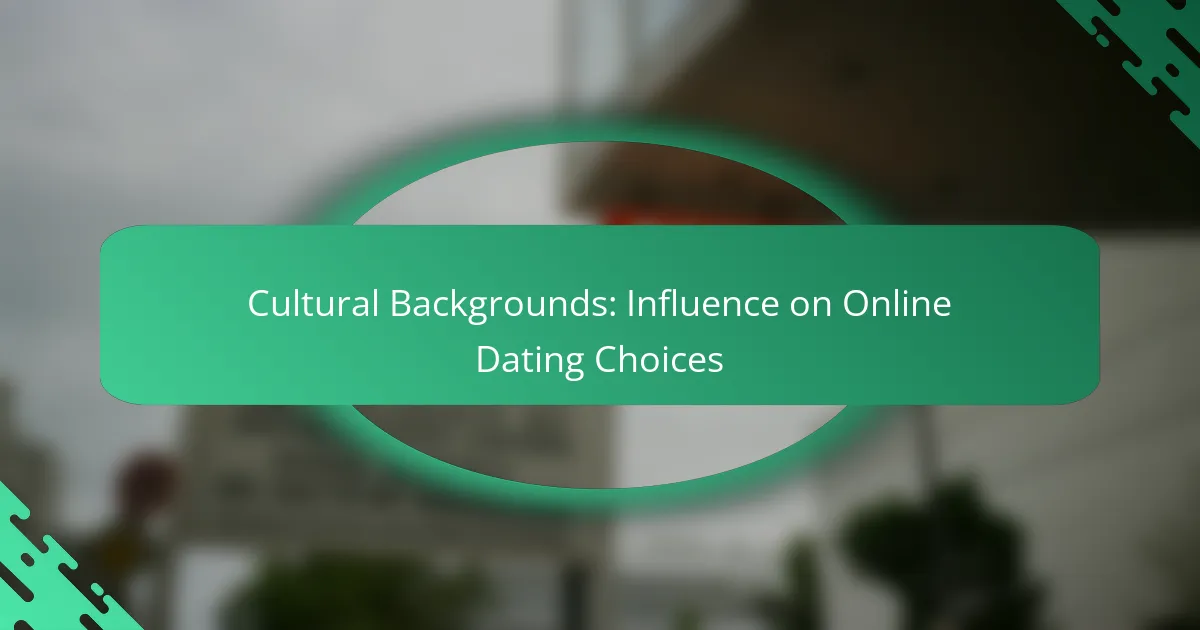In the competitive landscape of online dating, various apps in the US focus on specific demographics to help users find compatible matches that align with their unique preferences and relationship goals. By analyzing demographic factors, these platforms enhance user experiences and increase the chances of successful connections among like-minded individuals.
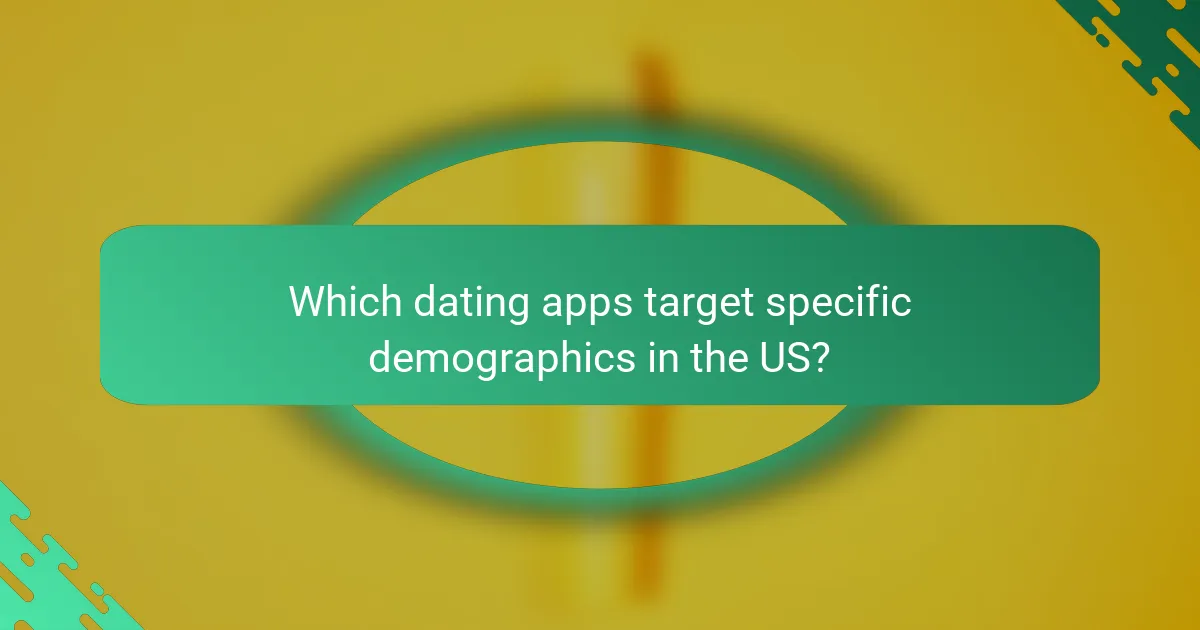
Which dating apps target specific demographics in the US?
Several dating apps in the US cater to specific demographics, helping users find matches that align with their preferences and relationship goals. Understanding these targeted platforms can enhance the dating experience by connecting individuals with like-minded people.
Tinder – Young adults
Tinder primarily targets young adults, particularly those in their late teens to early thirties. Its swipe-based interface encourages quick interactions, making it popular among college students and young professionals seeking casual dating or hookups.
Users should be aware that while Tinder offers a vast user base, the emphasis on speed can sometimes lead to superficial connections. To maximize success, users should create engaging profiles and be clear about their intentions.
eHarmony – Serious relationships
eHarmony focuses on individuals seeking long-term, serious relationships. It employs a comprehensive personality assessment to match users based on compatibility, which appeals to those looking for meaningful connections.
While eHarmony may require a longer commitment to the matching process, it often results in deeper relationships. Users should be prepared for a subscription fee, which can vary, but is generally seen as a worthwhile investment for serious seekers.
Grindr – [censured] community
Grindr is designed specifically for the [censured] community, offering a platform for [censured], [censured], [censured], and [censured] individuals to connect. Its location-based features allow users to find matches nearby, fostering quick and convenient interactions.
Grindr is particularly popular for casual dating, but users should approach interactions with respect and safety in mind. Being clear about intentions and practicing safe dating is crucial in this space.
Bumble – Women-led interactions
Bumble empowers women by allowing them to make the first move in initiating conversations. This app targets individuals looking for various types of relationships, including friendships and professional networking, in addition to dating.
To succeed on Bumble, women should feel confident in reaching out first, while men should be prepared to engage meaningfully once contacted. This unique approach can lead to more respectful interactions and a balanced dating experience.
Hinge – Relationship-focused
Hinge markets itself as the app “designed to be deleted,” focusing on fostering serious relationships rather than casual encounters. It encourages users to share more about themselves through prompts and photos, which helps facilitate deeper connections.
Users should take advantage of the prompts to showcase their personalities and interests. By being authentic and engaging, individuals can attract like-minded matches who are also interested in long-term relationships.
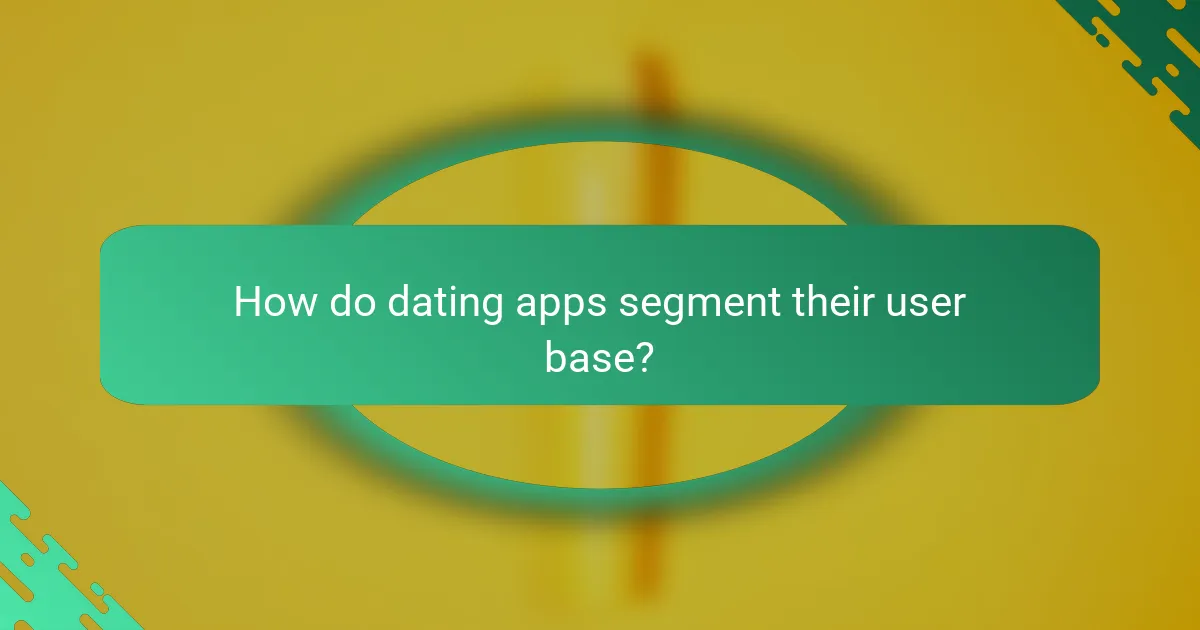
How do dating apps segment their user base?
Dating apps segment their user base by analyzing various demographic factors to tailor their services and improve user experiences. This segmentation helps apps connect users with similar interests and preferences, enhancing the likelihood of successful matches.
Age groups
Age is a crucial factor in dating app segmentation, as different age groups often seek different types of relationships. For instance, younger users, typically in their teens to early twenties, may be more interested in casual dating, while those in their thirties and forties often look for long-term commitments.
Many apps allow users to filter potential matches by age range, often focusing on specific brackets such as 18-24, 25-34, and 35-44. This helps users find partners who are more likely to share similar life stages and relationship expectations.
Gender preferences
Gender preferences play a significant role in how dating apps segment their user base. Many platforms allow users to specify their gender and the gender(s) they are interested in, catering to a wide range of sexual orientations.
Some apps focus on specific demographics, such as [censured] users, while others maintain a more general approach. Understanding these preferences helps apps create a more inclusive environment and improve user satisfaction.
Relationship goals
Dating apps often segment users based on their relationship goals, which can range from casual dating to serious relationships or even marriage. By allowing users to indicate their intentions, apps can better match individuals with similar desires.
For example, some platforms may have dedicated sections for users seeking long-term relationships, while others may focus on short-term dating or hookups. This clarity helps users navigate their options and find compatible partners more efficiently.
Location-based targeting
Location-based targeting is essential for dating apps, as proximity often influences the likelihood of meeting in person. Most apps utilize GPS technology to show users potential matches within a specific radius, typically ranging from a few kilometers to several hundred kilometers.
Apps may also cater to specific cities or regions, adjusting their marketing strategies to appeal to local demographics. Users can often filter matches based on their current location or preferred areas, enhancing the chances of finding nearby partners.
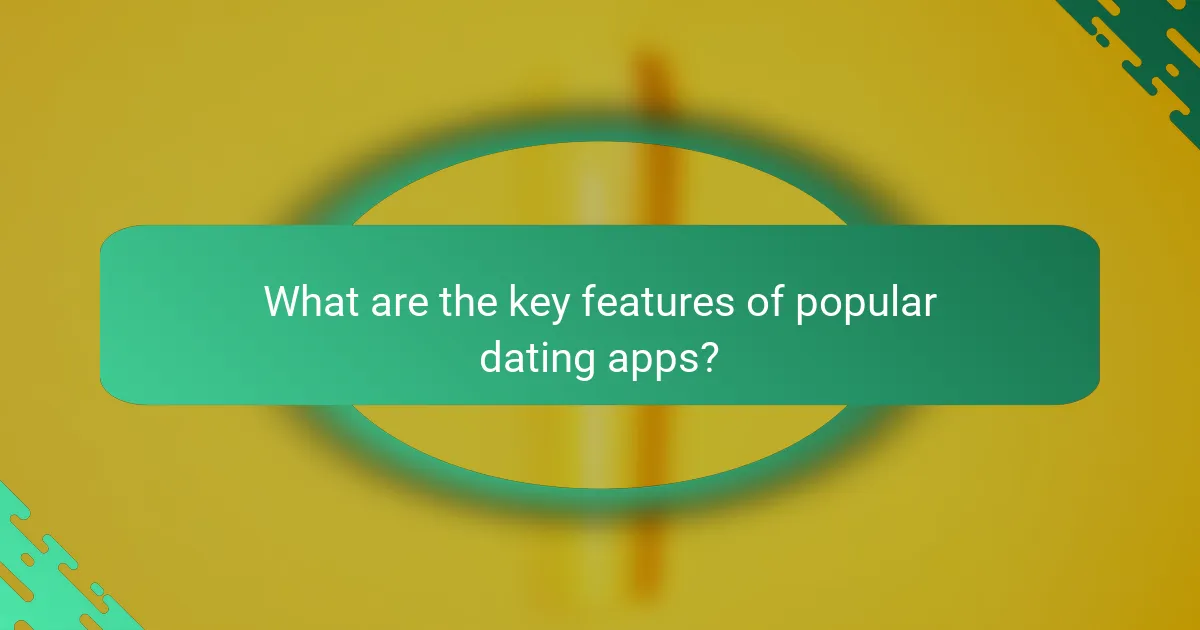
What are the key features of popular dating apps?
Popular dating apps share several key features that enhance user experience and engagement. These features include swipe functionality, profile verification, in-app messaging, and match algorithms, each contributing to how users connect and interact.
Swipe functionality
Swipe functionality allows users to quickly browse through potential matches by swiping right to like or left to pass. This feature is designed for ease of use, making it simple to evaluate profiles in a matter of seconds.
Many apps incorporate gamification elements, encouraging users to engage more frequently. However, it’s essential to remain mindful of the quality of matches rather than just the quantity, as excessive swiping can lead to decision fatigue.
Profile verification
Profile verification helps ensure that users are genuine and reduces the likelihood of encountering fake accounts. Many apps offer verification processes, such as photo verification or linking social media accounts, to enhance trust among users.
While verified profiles can increase safety, users should still exercise caution. Look for verification badges and be wary of profiles that lack them, as they may indicate less reliable users.
In-app messaging
In-app messaging allows users to communicate without sharing personal contact information. This feature typically includes text, emojis, and sometimes voice or video messaging, providing a safe space to get to know potential matches.
To foster meaningful conversations, consider starting with open-ended questions. Avoid generic greetings and instead reference something specific from their profile to create a more engaging dialogue.
Match algorithms
Match algorithms analyze user preferences, behaviors, and location to suggest compatible profiles. These algorithms can vary significantly between apps, affecting the quality and relevance of matches.
Understanding how an app’s algorithm works can help users optimize their profiles for better matches. For instance, regularly updating profile information and being active on the app can improve visibility and match quality.

What demographic trends are shaping dating app usage?
Demographic trends significantly influence dating app usage, with younger generations and diverse communities driving growth. Understanding these trends helps app developers and users navigate the evolving landscape of online dating.
Increased usage among Gen Z
Gen Z is increasingly turning to dating apps, with many preferring digital connections over traditional dating methods. This generation values authenticity and inclusivity, prompting apps to cater to their preferences through features like video profiles and social media integration.
As a result, dating apps are adapting their marketing strategies and user interfaces to appeal to Gen Z’s desire for genuine interactions. Apps that prioritize user safety and mental health are particularly popular among this demographic.
Growth of [censured] dating platforms
The demand for [censured] dating platforms has surged, reflecting a growing acceptance of diverse sexual orientations and gender identities. These specialized apps provide safe spaces for users to connect without the fear of discrimination.
Popular [censured] dating apps often include features tailored to specific communities, such as options for [censured] users or those seeking same-sex relationships. This focus on inclusivity fosters a sense of belonging and encourages more users to engage with these platforms.
Rise of niche dating apps
Niche dating apps are on the rise, catering to specific interests, lifestyles, or demographics. These platforms allow users to connect over shared passions, whether it’s veganism, fitness, or particular cultural backgrounds.
By focusing on specific user needs, niche apps can create more meaningful connections. However, users should consider the size of the user base, as smaller platforms may limit potential matches compared to more mainstream options.
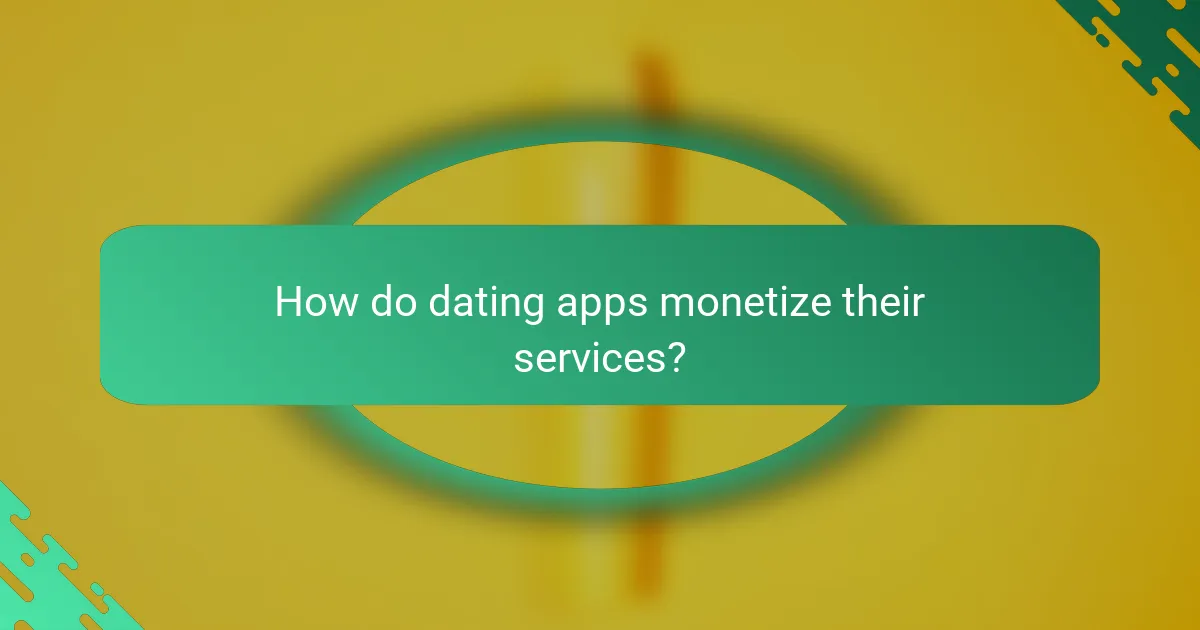
How do dating apps monetize their services?
Dating apps primarily monetize their services through subscription models, in-app purchases, and advertising. Users often pay for premium features that enhance their experience, while advertisers target specific demographics to reach potential customers effectively.
Subscription Models
Many dating apps offer subscription plans that provide users with additional features, such as unlimited messaging, advanced search filters, and the ability to see who has liked them. These subscriptions can range from monthly to annual payments, often costing anywhere from $10 to $30 per month, depending on the app and the features included.
For example, apps like Tinder and Bumble offer tiered subscription options, allowing users to choose a plan that fits their needs and budget. This model encourages long-term user engagement and provides a steady revenue stream for the app developers.
In-App Purchases
In-app purchases allow users to buy specific features or boosts that enhance their dating experience without committing to a subscription. Common purchases include profile boosts, which increase visibility for a limited time, or additional swipes in apps that limit daily usage.
These purchases typically range from a few dollars to around $20, making them an attractive option for users who want to enhance their experience without a long-term commitment. This flexibility can lead to increased revenue as users may opt for these one-time purchases more frequently.
Advertising
Advertising is another significant revenue stream for dating apps, especially those that offer free services. By partnering with brands, apps can display targeted ads to users based on their demographics and preferences, which can lead to higher engagement rates.
Advertisers often pay on a cost-per-click or cost-per-impression basis, allowing dating apps to monetize their user base effectively. However, excessive advertising can detract from the user experience, so finding a balance is crucial for maintaining user satisfaction.
